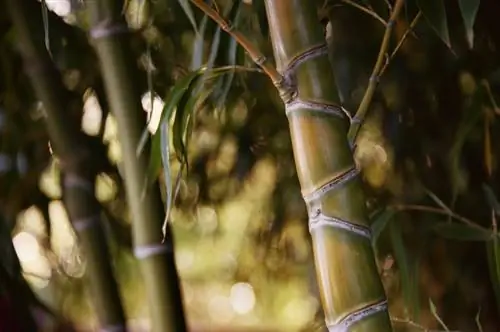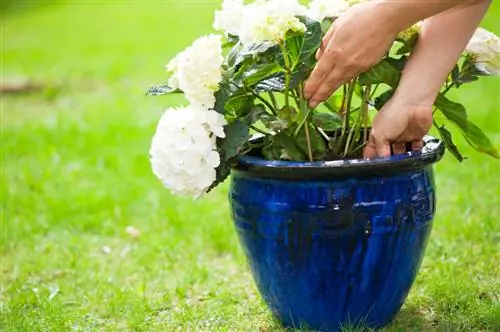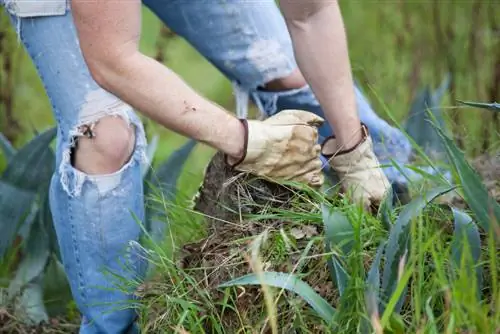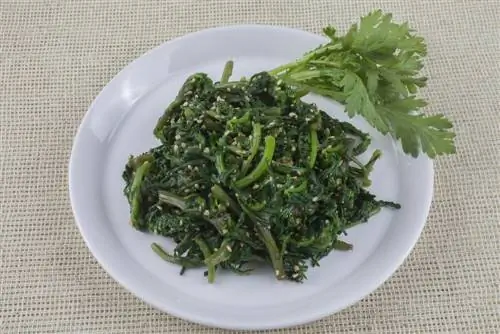- Author admin [email protected].
- Public 2023-12-16 16:46.
- Last modified 2025-01-23 11:21.
The wisteria is generally known as a strong-growing and lushly flowering climbing plant, especially from vacation. In southern countries it picturesquely overgrows house walls and is a popular photo motif. However, far less is known about its roots.

What are the properties of the wisteria roots?
The roots of wisteria are fast-growing, strong and can lift paving stones. They are poisonous to humans and many animals, but are a delicacy for voles. Mature roots tolerate radical pruning and should be protected from frost when planted in containers.
Like all other parts of the wisteria plant, its roots are poisonous to humans and many animals, but voles seem to see it as a delicacy. The roots are quite robust and usually grow back well even after a radical cut.
How do the roots of wisteria grow?
The roots of the wisteria spread about as far as the above-ground parts of this impressive climbing plant. They are quite fleshy and can be about as thick as your forearm. This makes it clear how much space the wisteria actually requires.
Similar to how its shoots can crush a gutter, the roots of your wisteria can hardly be stopped by obstacles. They lift paving stones and create tripping hazards on your garden path if it runs too close to the plant.
Do the roots need winter protection?
An old wisteria is very hardy and hardly needs any protection from frost. Only the fresh shoots and buds are sensitive to cold. Young plants and wisteria in pots, on the other hand, are grateful for winter protection.
How do I get the root residue out of the ground?
If you actually plan to dig up your wisteria, be prepared for a lot of work. Even small residues that remain in the ground sprout again and many a wisteria has already grown on a compost heap where only plant cuttings should actually be disposed of.
Interesting facts about the roots of wisteria:
- growing strongly and strong
- lifting paving stones
- often also grow on the compost
- are difficult to completely remove from the ground
- should be protected from frost when planted in containers
- are poisonous to humans and many animals
- seem to be a delicacy for voles
Tip
The roots of a fully grown wisteria are quite robust and can often tolerate quite radical pruning.






